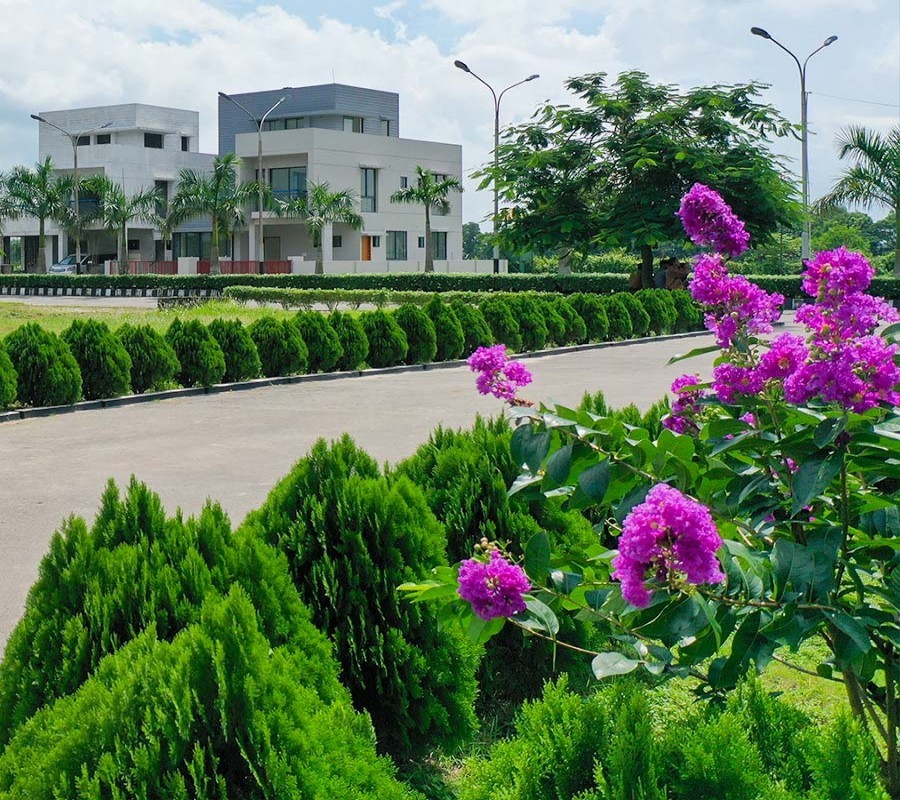Jarul Tree
The Jarul tree, scientifically known as Lagerstroemia speciosa, graces the valley with its distinctive presence, offering not only aesthetic beauty but also a wealth of culinary and medicinal benefits deeply ingrained in the culture of the region. Its multifaceted significance enhances the valley's landscape and contributes to the well-being of its inhabitants.
The young leaves of the Jarul tree hold a special place in the culinary traditions of Asian countries within the valley. Revered as a delectable and nutritious vegetable, these tender leaves are harvested and incorporated into various dishes, adding a unique flavor and texture to local cuisine. The culinary use of Jarul leaves contributes to the diversity of flavors in the valley's gastronomy and reflects the deep connection between the community and the natural resources that surround them. The Jarul's impressive size, towering branches, and stunning blooms have earned it the title of "Pride of India."
Medicinal Significance:
- Antioxidant and Anti-inflammatory Properties: Studies have shown that the bark, leaves, and flowers of the Jarul tree possess antioxidant and anti-inflammatory properties.
- Antimicrobial and Antibacterial Activity: Extracts from the Jarul tree have demonstrated antimicrobial and antibacterial activity, making them potentially beneficial for treating various infections.
- Wound Healing and Skin Care: The leaves and bark of the Jarul tree are traditionally used to treat wounds, burns, and skin diseases due to their antiseptic and healing properties.
- Treatment of Respiratory Diseases: Traditional medicine utilizes Jarul leaves to treat respiratory ailments like asthma, bronchitis, and cough due to their expectorant and anti-inflammatory properties.
- Pain Management: The analgesic properties of the Jarul bark have been used in traditional medicine to manage pain associated with various conditions.
References:
- "Phytochemical and pharmacological profile of Lagerstroemia speciosa Linn. (Lythraceae): A review" (2013): https://www.researchgate.net/publication/282183436_Phytochemistry_and_Pharmacology_of_Lagerstroemia_speciosa_A_Natural_Remedy_for_Diabetes
- "In vitro antimicrobial activity of Lagerstroemia speciosa flowers against selected bacteria isolated from skin and wound infections" (2016): https://pubmed.ncbi.nlm.nih.gov/37508848/
- "Traditional uses, phytochemistry and pharmacological properties of Lagerstroemia speciosa Linn.: A review" (2019): https://pubmed.ncbi.nlm.nih.gov/34102270/
- "The Ayurvedic Pharmacopoeia of India, Part 1, Volume 3": https://www.amazon.in/Ayurvedic-Pharmacopoeia-India-Part-First/dp/B0753CY89G
It is important to note that while these studies demonstrate the potential medicinal benefits of the Jarul tree, further research is needed to confirm its efficacy and safety for various health conditions. Always consult with a qualified healthcare professional before using any part of the Jarul tree for medicinal purposes.
As part of the valley's landscape, the Jarul tree adds to the visual diversity, with its vibrant flowers and lush foliage creating a striking contrast against the backdrop of the surrounding environment. The tree's ability to thrive in the region contributes to the overall aesthetic appeal, enhancing the natural beauty of the valley and making it a picturesque haven. Protecting and appreciating this magnificent tree is crucial for maintaining ecological balance, preserving cultural traditions, and ensuring future generations can witness its beauty and utility.


